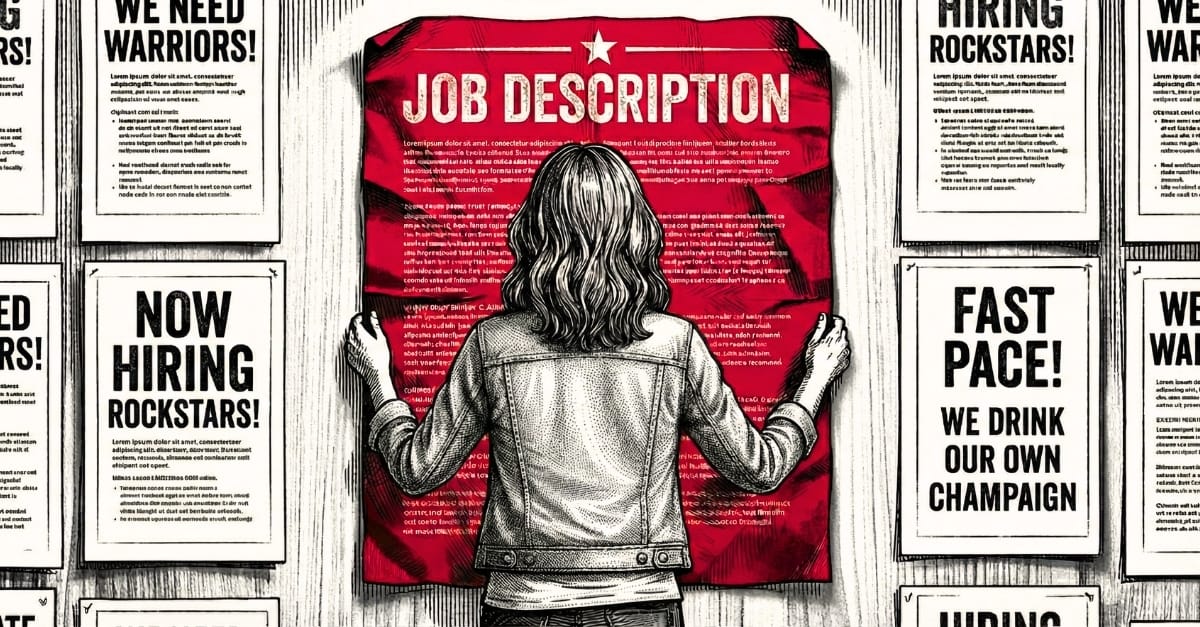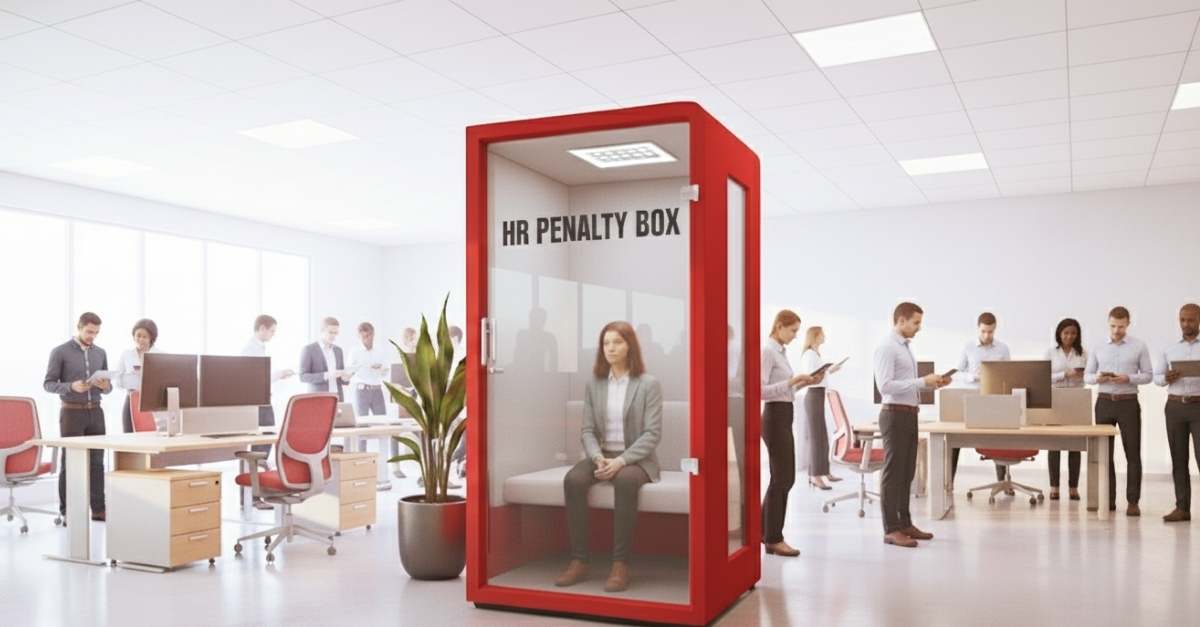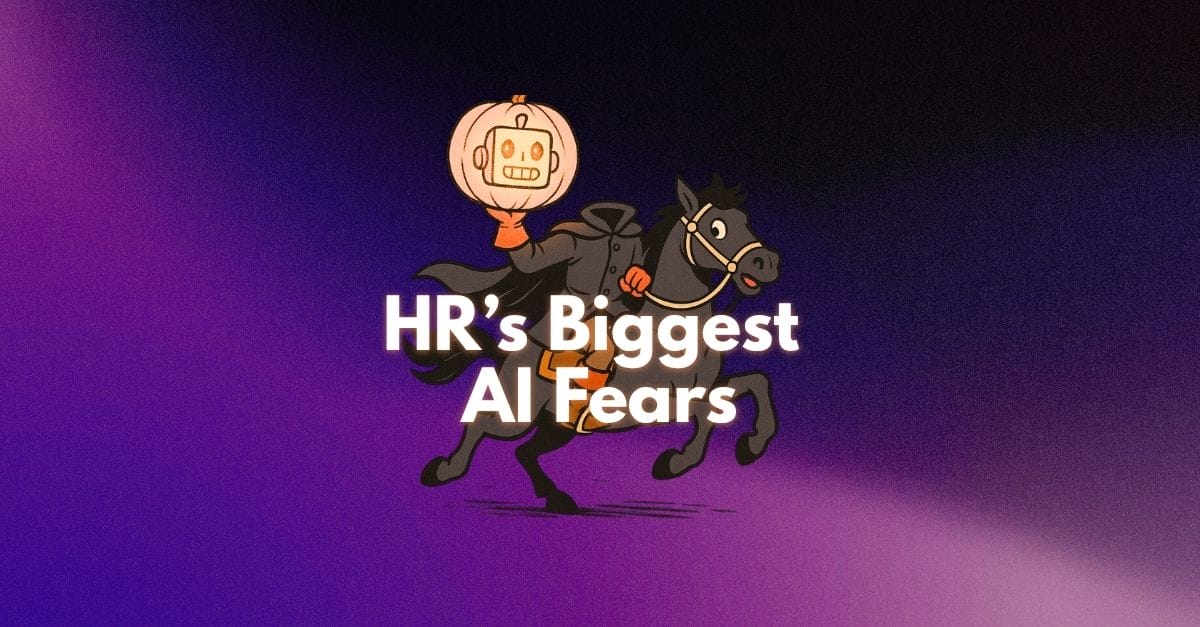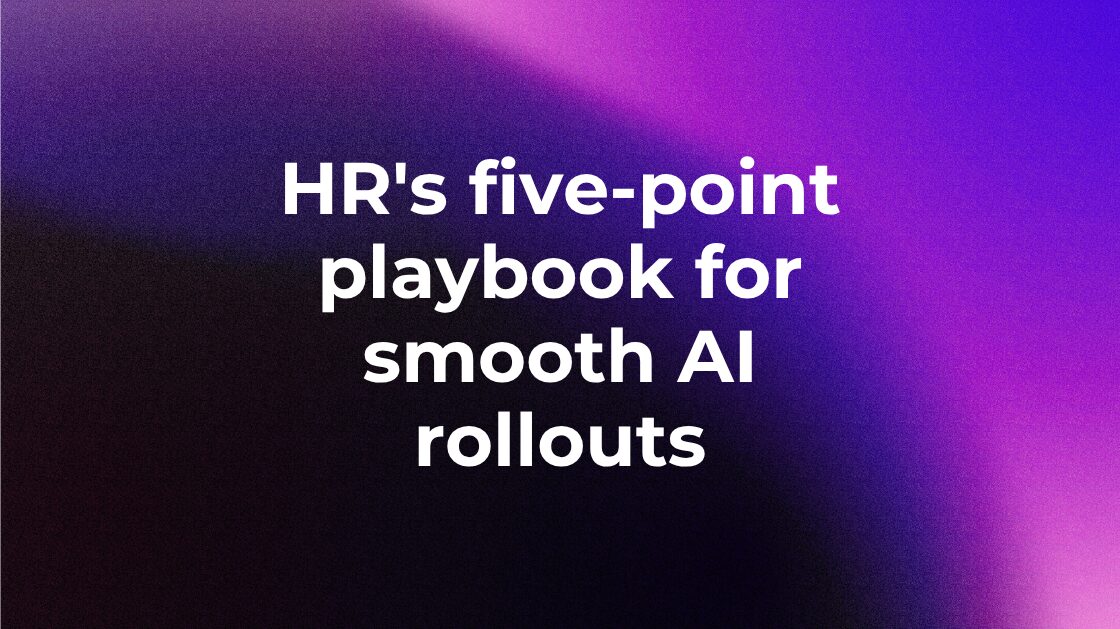An HR gap analysis is all about determining what talent you have versus the talent you need to achieve your company’s goals.
Whether you’re examining your entire HR function or focusing on specific areas, such as skills or technology, an HR gap analysis helps you find the gaps so that you can fill them.
But what precisely is a gap analysis in HR, and how do you identify HR gaps?
In this post, we’ll break down the different types of HR gap analyses, outline the steps to an effective gap analysis process, discuss the benefits and challenges, and share best practices.
What is an HR gap analysis?
An HR gap analysis is essentially a comparison between your workforce’s current capabilities and the capabilities they need to achieve your business goals. It’s about identifying what’s missing in your workforce—skills, processes, or structures—and creating a plan to bridge those gaps.
Think of gap analysis as your workforce GPS. It tells you exactly where you are and maps out how to get where you need to go. It gives you a clear roadmap for building a workforce that’s ready for both today’s challenges and tomorrow’s opportunities.

Optimize the entire talent journey.
Talent Optimization Essentials is the all-in-one, science-backed solution to hire, develop, and retain top talent.
Types of HR gap analysis
There are many different types of HR gap analysis, but each type shares the same DNA. They’re all data-driven, action-oriented, and future-focused. Whether you’re analyzing company-wide talent needs or identifying specific skill shortages, you’re collecting information, pinpointing problems, and developing plans to address them.
The main difference lies in the scope and detail. A broad HR gap analysis gives you a 30,000-foot view of your entire people strategy and how it connects to business goals. Specific gap analyses focus on particular areas, such as a skills gap analysis that may identify your team’s need for improved data analytics skills.
While a narrow analysis can identify problems, it may overlook key connections. A more expansive HR gap analysis reveals how different areas intersect and impact one another. For example, if your technology systems are outdated, that creates a skills gap because people can’t use tools they don’t understand.
A focused analysis might catch one issue, but the comprehensive approach shows you how everything fits together, resulting in a complete picture of what needs fixing and how those fixes work together to support your business goals.
Skills gap analysis
A skills gap analysis is the most straightforward type of analysis: what skills do you have versus what you need?
It involves taking inventory of your team’s current abilities, assessing where your business is headed, and identifying the gaps. For example, say you’re moving into digital marketing, but your team is only familiar with traditional advertising. That’s your skills gap.
Competency gap analysis
This one is bigger than just skills. Competencies include the whole package—knowledge, behaviors, attitudes, and personal traits.
While “Excel proficiency” is a skill, “cognitive thinking” is a competency that shows how someone approaches problems. This one focuses on defining the competencies each role requires, assessing where people stand, and identifying development opportunities.
Succession planning gap analysis
Who’s ready to step up when your key people leave? This analysis looks at critical roles and evaluates whether you have qualified internal candidates ready to fill them.
If your VP of Sales retires next year but nobody’s prepared to take over, you’ve got a succession gap to address.
Technology/system readiness gap analysis
Your HR tech should make your life easier, not harder. This analysis compares your current HR systems, such as payroll, HRIS, ATS, and talent management platforms, with what you actually need to run efficiently. If you’re still using spreadsheets to track performance reviews while your competitors have integrated analytics dashboards, you’ve found your tech gap.
Each type of HR gap analysis zeros in on different aspects of your workforce, but they’re all designed to answer the same question: What’s missing, and how do we fix it?
HR gap analysis process
Here’s a step-by-step breakdown of what that process might look like:
Step 1: Define objectives and strategic alignment.
Before diving into the data, you need to know what you’re working toward.
Start by understanding your organization’s big-picture goals for the next 3-5 years—whether that’s expanding into new markets, launching innovative products, or streamlining operations. Then drill down to see how each department fits into that vision and what kind of talent they’ll need to make it happen.
This isn’t just about headcount; it’s about understanding what your HR function needs to become to support these ambitions. Set clear KPIs upfront so you’ll know success when you see it.
Step 2: Assess current capabilities.
Now comes the reality check. You need an honest assessment of your current workforce capabilities, from skills and competencies to demographics and performance patterns.
Dig into your HR metrics—turnover rates, recruitment effectiveness, training outcomes, and employee satisfaction scores. Don’t forget to evaluate your processes and systems too. Are your hiring practices efficient? Is your performance management actually driving results?
This comprehensive audit gives you the baseline you’ll use to measure everything.
Step 3: Identify and categorize gaps.
This is where the magic happens. Compare your current state against your desired future state and identify the disconnects.
Maybe you’re missing critical technical skills, lacking leadership depth, or dealing with inefficient processes that slow everything down. Some gaps might be about having too much of something, others about not having enough.
The key is being systematic about cataloging these misalignments and grouping them into themes that reveal underlying issues.
Step 4: Prioritize gaps based on business impact.
Not every gap deserves equal attention. Prioritize based on what will move the needle on your strategic objectives. Consider the risk of leaving a gap unaddressed, how urgently it needs fixing, and how feasible it is to close.
Some gaps might be quick wins that unlock bigger improvements, while others require significant investment but are critical to your future success. Be sure to get input from business leaders to ensure you’re focusing on the right things.
Step 5: Develop an action plan.
With your priorities clear, create a detailed roadmap for closing the gaps. This might include targeted recruitment campaigns, upskilling programs, leadership development initiatives, or process improvements.
For each action, specify who’s responsible, when it needs to happen, what resources are required, and how you’ll measure success. Think beyond just hiring and training—sometimes, the solution is restructuring roles, upgrading technology, or enhancing your employer brand.
Step 6: Monitor and review outcomes.
The best plans are fluid and adaptable. Regularly track progress against your timelines and metrics, and be ready to adjust course when needed. Collect feedback from employees and managers to understand what’s working and what isn’t.
Remember, your business needs will evolve, so your gap analysis should, too. This continuous monitoring ensures that your HR strategy remains aligned with the organization’s direction, not just where it was when you began.
Benefits and challenges

Gap analysis benefits
There are numerous benefits to an HR gap analysis, including:
- Strategic hiring
- Strategic alignment
- Optimized resource allocation
- Proactive risk mitigation
- Improved succession planning
- Targeted upskilling and reskilling
- Enhanced employee engagement, retention, and internal mobility
- Increased operational efficiency and productivity
- A continuous improvement mindset and company culture
Gap analysis challenges
As helpful as HR gap analyses can be, they can come with some challenges:
- Unreliable or outdated performance data can derail the analysis before it starts
- Stakeholder/leader/department misalignment
- Hidden biases in assessment tools can overlook non-traditional talent or favor certain groups
- An ever-changing market can quickly outdate your analysis
- Resistance to change from employees, managers, leaders, or stakeholders
- Resource limitations, such as limited time, budget, or HR expertise
- Organizational complexity can create analysis paralysis
- Difficulty determining ROI between HR metrics and business outcomes
Best practices for HR gap analysis
Engage stakeholders early and continuously.
Engage senior leadership and department heads from the outset to shape strategic objectives and ensure ongoing buy-in. Regular communication about findings and proposed actions ensures you’re solving the right problems.
Link HR outcomes to business strategy.
Every gap and proposed action should clearly connect to business goals, like market expansion or cost efficiency. Quantify the impact in business terms, such as increased revenue, reduced costs, and improved customer satisfaction, to secure investment and demonstrate the strategic value of HR.
Make it iterative and responsive.
Schedule regular reviews annually or whenever major organizational changes occur. Gap analysis isn’t a one-time exercise—it needs to evolve with your business needs and market conditions.
Use diverse data sources.
Go beyond basic HR metrics by collecting data from HRIS, ATS, performance systems, skills assessments, employee surveys, exit interviews, and industry benchmarks. Balance quantitative data with qualitative insights for a complete picture.
Focus on specific, actionable gaps.
Drill down to specific skills, competencies, or processes that need addressing. Each gap should have clear indicators and realistic solutions that can actually be implemented.
Prioritize based on impact and feasibility.
Use an impact/effort matrix to tackle gaps that pose the greatest risk to strategic objectives or offer the highest ROI. Don’t try to solve everything at once.
Communicate transparently and create clear action plans.
Share results with stakeholders in a clear and concise manner, focusing on both the problems and their solutions. Develop detailed action plans with specific objectives, assigned responsibilities, timelines, and success metrics.
Invest in technology and foster a continuous learning culture.
Leverage HR technology to collect and analyze data more efficiently while using the gap analysis process to reinforce organizational adaptability and proactive skill development.
Gap analysis FAQ for HR leaders
Here are some common questions HR professionals have about conducting a gap analysis at their organization:
How often should I conduct an HR gap analysis?
Conduct comprehensive gap analyses annually or biannually as part of strategic planning.
Trigger an immediate, focused analysis for major organizational changes, new strategic directions, significant technological shifts, market disruptions, or when key HR metrics indicate problems, such as sustained high turnover or declining engagement.
What is a good format or template for HR gap analysis?
Structure your analysis with:
- An executive summary
- Organizational context and scope
- A current state assessment covering:
- Workforce profile and HR metrics
- Gap identification comparing current versus desired states
- Prioritization matrix
- Detailed action plans with owners and timelines
- Monitoring mechanisms
- Appendices with supporting data and stakeholder feedback
Who in the organization should own the gap analysis?
The Chief Human Resources Officer (CHRO) or HR Head technically owns the process, but successful execution requires collaboration from HR leadership teams, business leaders for strategic input, dedicated analytics teams if available, employees through surveys and interviews, and external consultants when needed for objectivity or specialized expertise.
How do I prioritize multiple HR gaps?
Use a systematic prioritization matrix to evaluate strategic impact, urgency and risk, and feasibility and effort.
High-impact, high-urgency, low-effort gaps get top priority for immediate action, medium combinations require planning before acting, and low-priority gaps can be deferred. Collaborate with business leaders to ensure alignment with organizational strategy.
How do I measure if training closed a gap?
Measure beyond attendance and satisfaction. Assess learning through pre- and post-tests, evaluate behavior change through manager observations and performance reviews, and measure business results using quantitative metrics tied to the original gap. Establish baseline metrics before training and track them afterward to demonstrate impact and ROI.
Can I outsource gap analysis, and when?
Outsource your HR gap analysis if your organization:
- Lacks internal expertise
- Needs objectivity
- Has limited resources
- Faces complex specialized gaps
- Requires industry benchmarking data
- You need external facilitation for sensitive analyses
When outsourcing, define the scope clearly, ensure data access and security, maintain internal stakeholder involvement, and establish knowledge transfer processes for ongoing management.
How The Predictive Index can help
So, what do you do if you find gaps in your workforce?
If you’re looking to upskill current employees, the Predictive Index’s Inspire platform helps anyone become a better leader. Whether you’re looking for a new people manager, an experienced executive, or simply want a team member to develop into a leader, PI provides the necessary data to supercharge their leadership abilities.
If you’re looking for new talent, PI Hire provides actionable, objective data integrated into your hiring process, enabling you to hire and retain exceptional people, decrease the likelihood of turnover, and utilize behavioral interview questions and your entire team’s feedback to determine who will be the best fit for the role.








